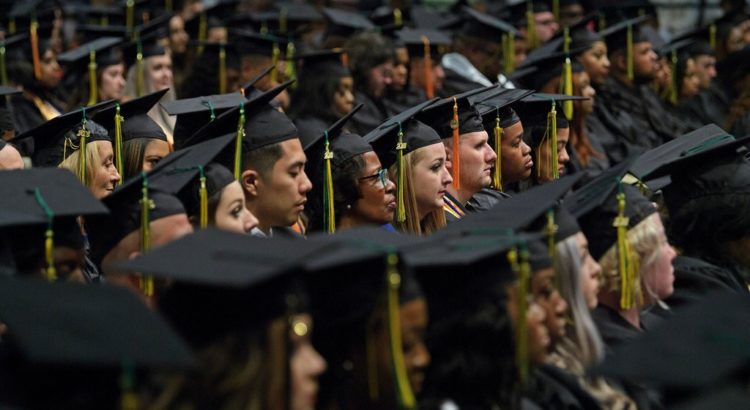By Davi Leonhardt
American higher-education policy has two overarching problems. We don’t spend enough money on college education for middle-class and poor students. And we don’t demand enough accountability from colleges.
The two problems feed off each other, leading to miserably low graduation rates — often below 50 percent — at many colleges. The colleges that have figured out how to do better aren’t rewarded with more resources. The colleges with weak results face few consequences. All the while, lower-income students suffer.
Fortunately, the problem of college performance is starting to get more attention — from colleges themselves, state officials and others. But there is still a huge missing piece: the federal government. Washington has the potential to influence higher education, via both money and oversight, more powerfully than any state or college consortium.
I don’t see much reason to hope that the Trump administration will play this role. Betsy DeVos, the education secretary, seems more focused on using federal dollars to lift the profits of private education companies, regardless of how well or ill they serve students.
Outside the administration, though, some policy experts are starting to have intriguing conversations about the future of federal higher-education policy. The latest example comes from the Center for American Progress, the liberal research and advocacy group, which on Wednesday is set to release a new higher-education proposal. It focuses on those two big problems: lack of resources and lack of accountability.
The proposal calls for roughly doubling federal financial aid, an increase of $60 billion a year. (That’s less than one-fourth of the annual cost of the Trump tax cut, as Ben Miller, a former Education Department official who helped write the proposal, told me.) The bulk of that money would increase financial aid by up to $10,000 a year for a low- or middle-income student.
This money would effectively help cover student living costs, which often run close to $15,000 a year. Those costs — mostly room and board — are a major burden even for students who receive enough financial aid to cover much of their tuition bill. In fact some higher-education experts believe the recent attention on “free college” has been problematic, because it has obscured the fact that tuition isn’t the main issue for many lower-income families.
The second part of the new proposal would require colleges to meet performance benchmarks in exchange for the infusion of new federal spending. These benchmarks would include graduation rates and post-college employment and would vary based on “degree of difficulty.” A college that enrolled mostly low-income students wouldn’t be expected to have the same results as an elite college. Over the long term, colleges that failed to meet the benchmarks could lose funding, as is already the case in some states, including Florida and Indiana.
I don’t agree with every part of the proposal. I think it focuses too much on equity among demographic groups within colleges, for example — whether white and non-white students, or high- and low-income students at a given college fare similarly. These gaps exist, but they are usually modest. The much bigger problem is that students from different groups tend to attend different colleges. But I also think the plan is an excellent way to start the discussion.
A college degree remains the most reliable path to a good job and a healthy, satisfying life. That path should be open to a much larger segment of Americans than it is now.
On the news. President Trump’s use of the word “infest” yesterday continues his ugly pattern of describing illegal immigrants as subhuman. And “infest” is particularly stark, because it suggests that immigrants are akin to insects or rats — an analogy that Nazis frequently used to describe Jews, as Aviya Kushner notes in The Forward.
On the same subject, Slate’s Jamelle Bouie predicts that Trump’s
dehumanizing language “will only get worse as November approaches.” Bouie adds: “To energize its voters, the White House plans a campaign of vicious demagoguery.”
I’m not suggesting that Donald Trump is a Nazi. He is not. Yet it would be wishfully naïve to explain away his racism and his hate at this point. In both word and deed, he has shown himself to be quite comfortable with many of the ideas of white supremacy.
Source of the article: https://www.nytimes.com/2018/06/20/opinion/college-middle-class-poor-students.html?rref=collection%2Ftimestopic%2FEducation







 Users Today : 102
Users Today : 102 Total Users : 35459568
Total Users : 35459568 Views Today : 160
Views Today : 160 Total views : 3417918
Total views : 3417918